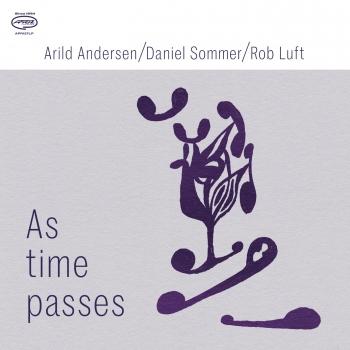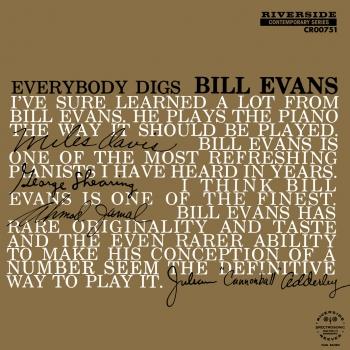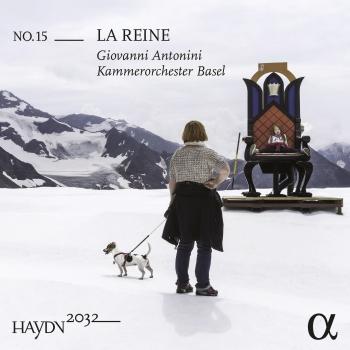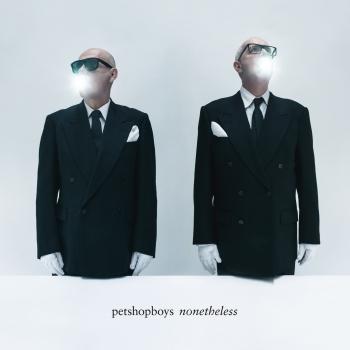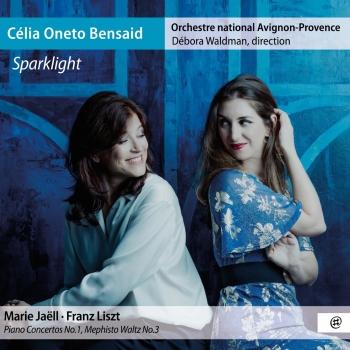
Telemann: 12 Fantasias Marek Nahajowski
Album info
Album-Release:
2014
HRA-Release:
15.09.2014
Label: RecArt
Genre: Classical
Subgenre: Instrumental
Artist: Marek Nahajowski
Composer: Georg Philipp Telemann (1681-1767)
Album including Album cover
- Georg Philipp Telemann (1681-1767): 12 Fantasias
- 1No. 1 in A Major, TWV 40:203:30
- 2No. 2 in A Minor, TWV 40:305:18
- 3No. 3 in B Minor, TWV 40:404:11
- 4No. 4 in B-Flat Major, TWV 40:504:39
- 5No. 5 in C Major, TWV 40:604:30
- 6No. 6 in D Minor, TWV 40:706:02
- 7No. 7 in D Major, TWV 40:804:11
- 8No. 8 in E Minor, TWV 40:904:51
- 9No. 9 in E Major, TWV 40:1007:18
- 10No. 10 in F-Sharp Minor, TWV 40:1104:21
- 11No. 11 in G Major, TWV 40:1204:02
- 12No. 12 in G Minor, TWV 40:1305:31
Info for Telemann: 12 Fantasias
Fantasias are created intuitively - that is why they are expressed, in large measure, in a free manner (ex tempore) and for that reason they are performed, or composed correspondingly to the ideas appearing on the spur of the moment, regardless of the limitations connected with a type of measure [and meter].
That is how Johann Gottfried Walther described the genre of instrumental fantasia (Musikalisches Lexicon, Leipzig 1732). The opinion was not an isolated one. Most music theorists of the 1st half of the 18th century considered fantasias to be a kind of improvised music, or quasi-improvised one, characterized by almost complete freedom both in terms of their formal structure and musical expression. This point of view was also shared by Telemann’s friend, Johann Mattheson, who stated in his opus magnum (Der vollkommene Capelmeister, Hamburg 1739) that (…) pieces of that kind sound best if they are improvised, though they can be written down on paper. [As far as formal structure is concerned] they have so few limitations and so little order that it is hard to define them otherwise than just products of invention [of a performer, or composer]. For that reason they are marked with, first and foremost, (general) fancifulness.
On the other hand, however, in the works of numerous composers from the 17th century (not only, though) one can find examples of fantasias which have almost nothing in common with the idea of free improvisation (ex tempore), just to mention a contrapuntal texture of the 17th-century English Fancies written for viola da gamba ensembles in mind. In reality, the name ‘fantasia’ frequently covered various types of a formal structure and musical expression.
That is the case of flute fantasias by Georg Philipp Telemann. These pieces are not only a display of composer’s invention but also make an example of a particularly skillful synthesis of most contemporary stylistic conventions. Despite the fact that one can find numerous references to a typical layout of the late-Baroque sonata in most of them, the composer treated structural patterns with his characteristic inventiveness. In the works in question there are both free, quasi-improvisational fragments in the manner of a prelude or toccata and parts employing dance rhythms, melodious and affectionate Adagias, as well as fugues maintained in a ‘scholarly’ (gelehrt) style. From this perspective the idea of ‘fantasizing’ manifests itself as a peculiar synthesis of different forms of musical utterance where the mood of totally unhindered joy interweaves with melancholy; ‘scholarism’ of the structure – with bacchanalian impetuosity of dance; gentleness of a fine melody shows contrast with pathos of a French overture and symmetric phrases – with fanciful improvisational fragments and figural passages.
Flute fantasias were preserved as manuscripts, now safe kept in the library of the Royal Conservatory in Brussels. Interestingly enough, the title page says that the pieces are meant for the violin. In one of his autobiographies Telemann mentions, however, fantasias composed for the flute solo. What is more, the pieces must have been esteemed by contemporary flutists, which illustrates the fact that they were supposed to be performed during a ‘duel’ between Joachim von Moldenit and one of Johann Joachim Quantz’s students (it did not come off, though). What makes us sure that Telemann really had that particular collection of pieces in mind is analysis of the solo part, the range of which (d¹ - e³) coincides with the range of the contemporary transverse flute.
According to the performance practice widely adopted in the 1st half of the 18th century, violin compositions were performed on various wind instruments (and vice versa). In case of the basic type of the recorder (in F; today called the alto one) it was necessary to transpose all parts of the piece by a minor third or a perfect fourth up. It was a common practice, confirmed by the instrumentation tips given in the prefaces to numerous collections of sonatas, including the commentaries by Telemann himself. Interestingly enough, though there were various sizes of recorders, while performing trio sonatas and solo pieces accompanied by basso continuo (or without accompaniment) they were used with some reluctance. So-called voice flutes (in D) were manufactured only in England, whereas they were practically unknown on the continent. In turn, tenor recorders (in C), which were popular on the continent, were mostly used for performing orchestral parts and works intended for recorder ensembles - because of their limited mobility and difficulty producing clear high pitches.
To be able to follow instrumentation guidelines and to remain faithful to the sound aesthetics of the epoch, we have made a sole use of the recorder in F on this album. In nine fantasias we have applied a standard 18th-century transposition by a minor third up. The remaining three ones – number IV, V and XII – have been transposed to the key placed a fourth higher, owing to a more favorable tone.
Marek Nahajowski, flute
Marek Nahajowski
(b. 1979), music theorist, recorder-player performing on replicas of period instruments, lecturer in the Music Theory Faculty of the Grażyna and Kiejstut Bacewicz Academy of Music in Łódź, where he holds courses in the history and performance practice of Baroque music and since 2011 he has been conducting the recorder class. He is an author of the first Polish translation of Johann Joachim Quantz’s treatise Versuch einer Anweisung die Flöte traversiere zu spielen (O zasadach gry na flecie poprzecznym, Łódź 2012). His academic research focuses on hermeneutic interpretations of the 17th/18th-century musical pieces, as well as aesthetics and performance practice of Baroque and early Classicism. As an instrumentalist he has played with numerous early music ensembles, such as Il Tempo, Ars Cantus, Umbraculum, St Louis Club and others. Marek Nahajowski is also invited as a guest lecturer to early music interpretation courses like The Early Music Forum at the Frederic Chopin Music University, Polish Summer Early Music Workshops in Kalisz and Gorzów Meetings with Early Music.
This album contains no booklet.

